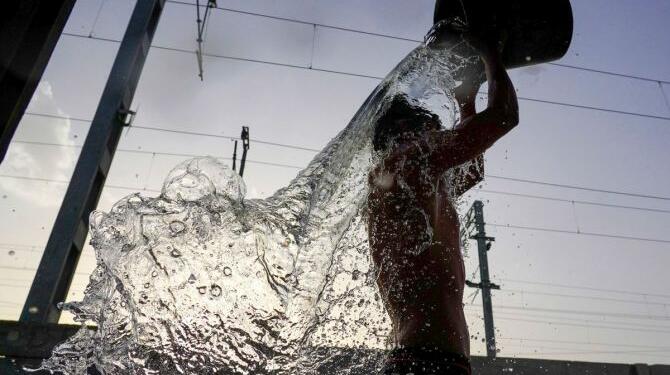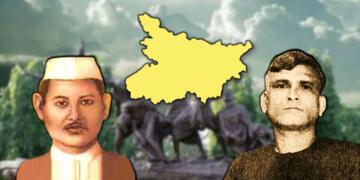- April 2022 turned out to be the hottest year in last 122 years of measured temperatures.
- Strong heat waves due to global warming and weak rainfall due to cooler Pacific Ocean are the main reasons.
- Until we do not work towards improving the industry-forest ratio, people will continue facing survival issues.
So, summers are in. People who are engaged in tightly fought IPL matches are not able to see the other side of the heat. This heat is real and is becoming unbearable. This year’s summer season has started with a bang and is expected to bring in more of its progenies during upcoming months.
Extreme heat in India
Within two months of onset of summer, Indians are tired. People earning through doing physical work like Rickshaw pullers are mostly refusing to do it after 10 AM. People engaged in Blue-collar economy are reaching office earlier than usual, just to sit in the coveted Air Conditioner after the Sun starts bombarding its rays.
The temperature in Rajasthan, east Uttar Pradesh, west Madhya Pradesh, and Vidarbha has surpassed 45 degree celsius limit. Other areas of countries have witnessed a similar departure from average temperature in the month. Even nights are not providing the soothing effect they used to give. During April this year, average night temperature hovered over 23.51 degree Celsius, 1.36 degrees above average. April has turned out to be the third hottest month in last 122 years of recorded history.
If anyone wants to pinpoint towards overall factor for temperature rise, then the ultimate answer will turn out to be Global warming. However, that will escape the closer scrutiny as people may avoid the discussion by calling it a part of a larger pattern. A closer scrutiny and minute breakdowns are required to head towards any solution which may prove to be beneficial for the public and policymakers.
Read more: Western nations harassed India over climate change. PM Modi’s bold demand has shut them down
Heat waves are the ultimate reason
Though everyone understands the general meaning associated with the word heatwave, the Indian Meteorological Department (IMD) has designed a special scale for defining heatwave. Heat waves are a period of abnormally high temperature over a particular period of time. This ‘high temperature’ has to be more than the maximum temperature occurring during summer seasons. However, India is a diverse country and maximum temperature parameter varies across geographies. In desert areas, it may be 50 degree celsius, while in hilly areas, it may be 20 and fewer degrees celsius to the max.
IMD has a solution for that. In the plains like Rajasthan, UP among others, IMD mandates only those days on which temperature has crossed 40 degree celsius to be called as affected by heat waves. For coastal regions like Kanyakumari Coast, Mahanadi Delta, Sandy Coastal regions among others, the criteria for maximum temperature changes to 37 degree celsius. Similarly, for hilly areas like Leh Ladakh, Manali, the cut-off for maximum temperature comes down to 30 degree celsius.
This heatwave is caused due to trapping of air inside the various spheres looming over a particular geography. Global warming is mainly credited for this kind of phenomenon. This creates a static high pressure which acts as a barrier for upcoming molecules and forces the mass of air to sink to the surface of land, preventing heat to dissipate further.
Within two months of arrival of summer in 2022, India has already witnessed 26 heatwave days. To put things in perspective, 26 heat waves occurred within a period of 60 days. Now, compare that with the number of heatwaves in 2020. In 365 days of 2020, Indians faced only 42 heat waves. Going by this trend, the number of days may come close to the 12 year high of 254 such days observed in 2010.
This year’s heat waves have been more methodical in their approach. It occurred in four spells. The first spell between March 11 to 19 hit mainly the northwestern part of country like Gujarat, Maharashtra, Rajasthan, Delhi, Punjab. The next spell between March 27 and April 12 affected North and central regions like Uttarakhand, Jharkhand, Chhattisgarh and some regions of Madhya Pradesh. The third spell torched areas like Delhi, UP, Bihar and some areas of Rajasthan and Vidarbha. Fourth spell commenced on April 24 scorched remaining areas of the country.
An estimate of how dangerous these heat waves are can be gauged from the fact that IMD estimates that within last 5 decades, the cause of death of 17,000 people is easily traceable to these murderous waves.
Read more: PM Modi demolishes the West for shoving the ‘net zero emissions’ plan down the world’s throat
Where are the rains?
Normally, every year, the soothing effect from summer is provided by a short spell of rain. This year, it has not been observed to a large extent. This time, South and northeastern India did get the rainfall, but, even at those places, it was not normal as rains were either extreme or absent from the scene.
In north and north-western India, this rain is mainly caused by interaction of western disturbances with moist winds blowing from the Southern part of India. The Western differences originate from West Asia and through their interactions with winds blowing in India, they provide thunderstorms to mainly north and north-western India.
The main reason being attributed to this lack of rainfall in north and north-west is that Western disturbances occur due to temperature difference between the northernmost part of our Earth and latitudes passing through Western part of Asian continent. The higher the gradient, the higher is probability of rainfall in India. This year, this gradient was extremely weak as during March and April, the Pacific Ocean was cooler than normal.
Read more: Part 1: Global Warming: The End Is Nearing, And Fast
Will the causes continue to create havoc?
The short answer is Yes. Though Bhagwan Indra has blessed some parts of India with showers but they have been few and far in between and have disappeared after half an hour or so. According to a report by Indian Express, North India will continue to witness non-continuous spells of heat waves, the areas falling to the south of geography will witness more upsurge.
Global warming has become a reality. Its effects are now being observed in our day-to-day lives. Firstly, winters disappeared and now summers are becoming impossible to bear. It’s time we act now, or the common populace is going to face an existential crisis due to these heat waves.


































